Do Right, No Bite!
Hi, my name is Dally the Dalmatian.
I'm famous for my advice on how to stop dog bites before they happen.
My job is to help children and adults to learn how to treat all dogs with care, consideration, and respect, as well as to stay safe by making the right choices around all dogs, not just the family pet.

Did You Know...
- Australia has a canine population of an estimated total of 5.1 million.
- It's estimated that each year more than 100,000 Australians are attacked by dogs, causing injuries.
- Over 60% of dog bites occur either at home or the backyard of a family member, a friend or neighbour.
- Around 60% of serious bites occur in children under 10 years and many are to the head, face and neck.
- Children spend an average of 2.2 days in hospital as a result of a dog bite.
The good news YOU can help reduce this number of dog bites by following some simple rules which will help you not to be bitten by your dog or another person's dog.

Five Dog Senses
Dogs have the same five senses as we do. Smell, hearing, taste, touch and sight.

Smell: "The sense of smell is very different between dogs and people. The percentage of the dog's brain that is devoted to analyze smells is 40 times larger than that of a human! It's been estimated that dogs can identify smells somewhere between 1,000 to 10,000 times better than humans!"
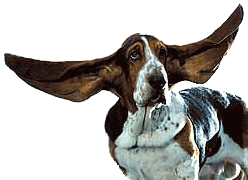
Hearing:"Dogs have a great sense of hearing. In fact, it is their second best sense (next to their sense of smell). Not only can they hear sounds that are too quiet for people to hear, but they also can hear sounds that are either too high or too low in pitch for people to hear. A dog’s ability to hear varies based on a dog’s age and breed. Like people, dogs can start to lose their hearing as they become older and, in some cases, a dog may go completely deaf."

Taste: "A dog’s sense of taste is its least developed sense and, just as with humans, taste is closely linked to the sense of smell. The main difference with taste between people and dogs is that people won’t eat something that smells bad, while dogs are the opposite – the smellier the better! People tend to try something before deciding whether or not we like it. Dogs, however, have fewer taste buds than people and are more concerned with smell. Dogs frequently gobble down food before they even have time to chew it, or taste it."
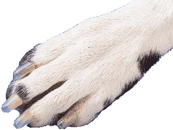 Touch: "This is the first sense the dog develops. Mothers begin touching their puppies almost immediately after their birth by licking and nuzzling. The dog’s entire body, including its paws, is covered with touch-sensitive nerve endings. The sense of touch is important to the dog because it helps it socialise with its pack-family and other dogs. That is why it’s so important to pet your dog."
Touch: "This is the first sense the dog develops. Mothers begin touching their puppies almost immediately after their birth by licking and nuzzling. The dog’s entire body, including its paws, is covered with touch-sensitive nerve endings. The sense of touch is important to the dog because it helps it socialise with its pack-family and other dogs. That is why it’s so important to pet your dog."

Sight: "The dog’s eye does not have the same things found in the human eye. For example, although a dog can see colors, what they see is a more muted version of what we see. Dogs probably see the world in shades of black, white, and gray. Dogs also have better night vision and side vision than humans, but dogs cannot tell how far away something is as well as humans can. A dog’s ability to see also varies by breed and age."
Dog Bite Facts
- More often than not, dog bites occur in and around dog owners’ homes.
- Children are around three times more likely than adults to be seriously bitten and children under 15 years of age are most at risk of being bitten by a dog.
- Boy’s injury rates are much higher than girl’s injury rates.
- The large majority of biting dogs belong to the victim's family or a friend.
- In the past 10 years the number of people who where admitted to hospital, following a dog bite, has increased by over 60%.
- Dog bites on children often occur on the face, head and neck because of a childs height in relation to the dog and the type of play the child engages in.

Why Dogs Bite
Most dogs are very friendly, but many dogs will bite if they think they have to. The dog that bites is not necessarily a mean dog or a bad dog; They are just being a dog. Dog bites occur for many different reasons, so by understanding how dogs think, you can significantly reduce your risk of getting bitten.

- Scared: If a dog feels scared or thinks you are going to hurt them, they will react by running away or maybe by growling, showing their teeth or trying to bite you.
- Protecting their territories or puppies: Dogs can be protective of their territory and their family. If you invade a dog’s space by coming into their territory or coming up to pet her pups, the dog may think you are a threat and may try to bite you.
- Poorly trained, socialised and managed: Dogs that do not know how to behave appropriately in different situations or that have not experienced and become comfortable with things in our world do not know that it is not appropriate to be aggressive. Dogs are not humans and we cannot expect them to be just like us. Dogs need to learn positively how to live with us and behave appropriately. They need to be put away (in their crate or another room) if you are unable to supervise them or if you have other children visiting.
- Feeling ill or hurt: Dogs may bite when they are sick or hurt. It is not always obvious when a dog is sick or injured. When we approach an injured dog, it does not know if we are trying to help them or hurt them. So, always call an adult to examine a sick or injured dog, even if it is your own dog.
- Over excited: Sometimes dogs get overexcited! If you are teasing a dog or playing roughly, they may snap or bite. Dogs use their teeth like we use our hands. Always play gently, making sure that the dog is enjoying it.
- Sleeping/ Eating/ Playing with toys: Startling a dog awake can lead to a bite. Just like us, they might be grumpy. Dogs can also be protective of their food and toys and are more likely to bite if they think you are trying to take away their food or toy.
Remember, any dog can bite, regardless of breed. There is no 100% safe breed. Even the cuddliest and sweetest dog can bite if they think they have to.
Dog Body Language
Dogs use body language as a way to tell us how they feel. Learning to read body language will help you determine if the dog is in a friendly mood or should be left alone.
The following are some body language signs to look for and what the dog may be trying to tell you. Some body postures can have more than one meaning. For example, erect ears may mean that the dog is happy, excited, confident, aggressive or interested. For this reason, keep in mind that this information is not absolute but can be used as a guide.
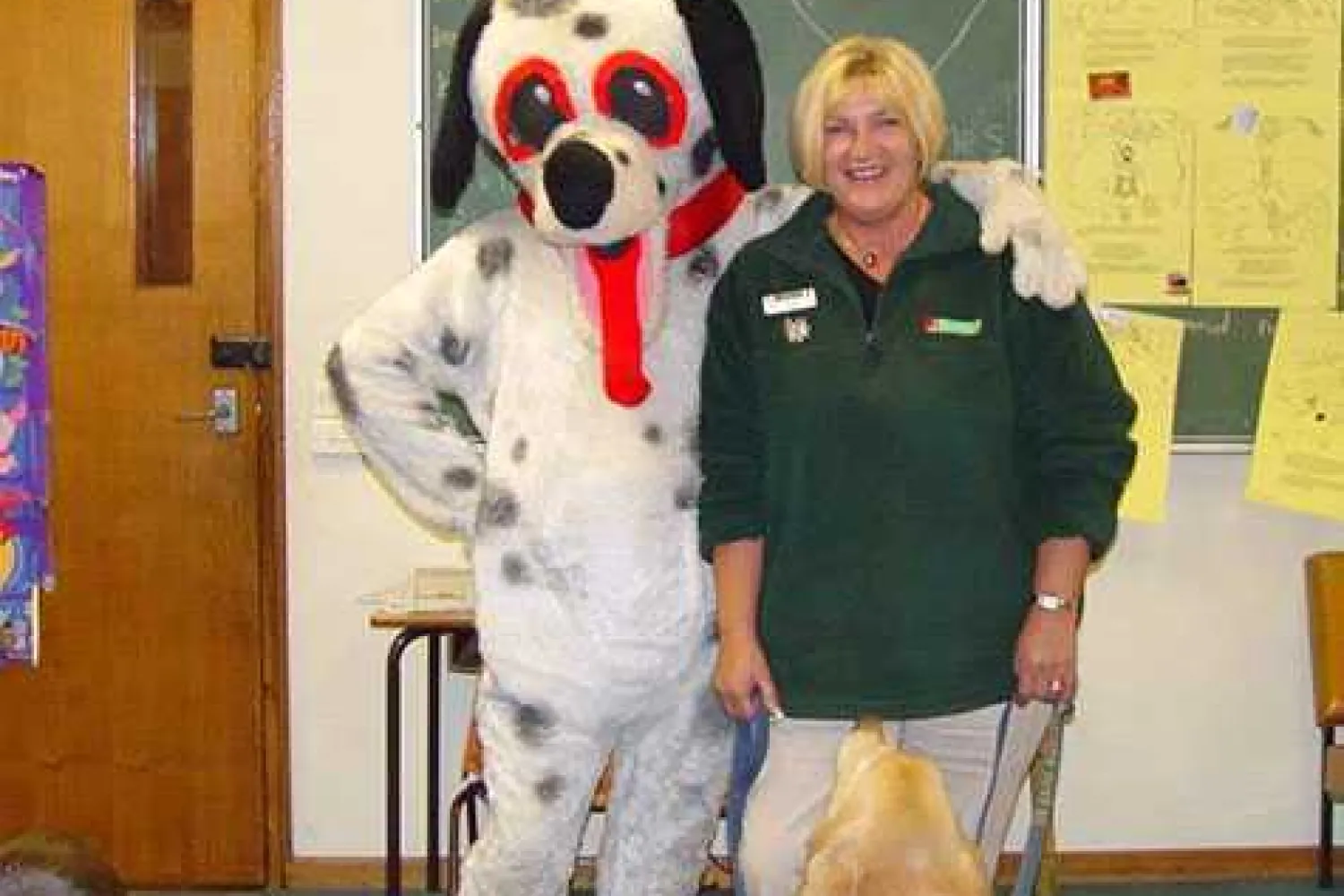
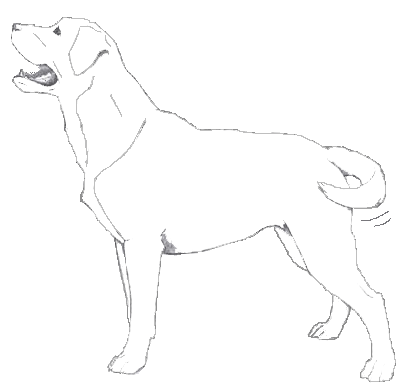
Happy Dog - "This dog will have their mouth open as if they're smiling. The tail will wag and body may wiggle because their just so happy"

Angry Dog - "This dog's body will often be as stiff as a board. When a dog is angry, you can see the whites of their eyes when they stare at you. Another early warning sign is a little curling up of the lip. Sometimes the hackles (fur on the top of the shoulders and above the tail) will be raised. The tail will be stiff, too – just like a flagpole. A really angry dog will even show their teeth and growl. "

Frightened / Scared Dog - "This dog's body will be crouched and low to the ground, with their tail tucked down below their back. Sometimes the hackles (fur on the top of the shoulders and above the tail) will be raised. They may even try to run away, but if they are unable to run, they may try to bite. If this dog gets too scared, they may growl or bite. If they feel threatened, they may bite as a self-defense mechanism."
Remember, any dog can bite, regardless of whether or not they warn you with a certain body posture, growl or bark.
Reduce the Risk of Dog Bites
- Spay or neuter your dog. Hormones have a significant impact on behaviour and can cause both male and female dogs to act in aggressive and / or destructive ways. Spaying or neutering will not only make a dog less likely to bite, it will also decrease a dog's tendency to wander. The best age to spay or neuter a dog is at the beginning of puberty, between six and eight months old.
- Train your dog. Proper manners not only benefit you and your dog but also others. A well-behaved dog is less likely to upset people and pets in public places and will be more welcomed at gatherings.
- Teach your dog appropriate behaviour. Don't teach your dog to chase after or attack others, even in fun. Don't play aggressive games (such as wrestling or tug-of-war) with a puppy or adult dog. Be careful of physical games because your dog can't always understand the difference between play and real-life situations. Set appropriate limits for your dog's behaviour.
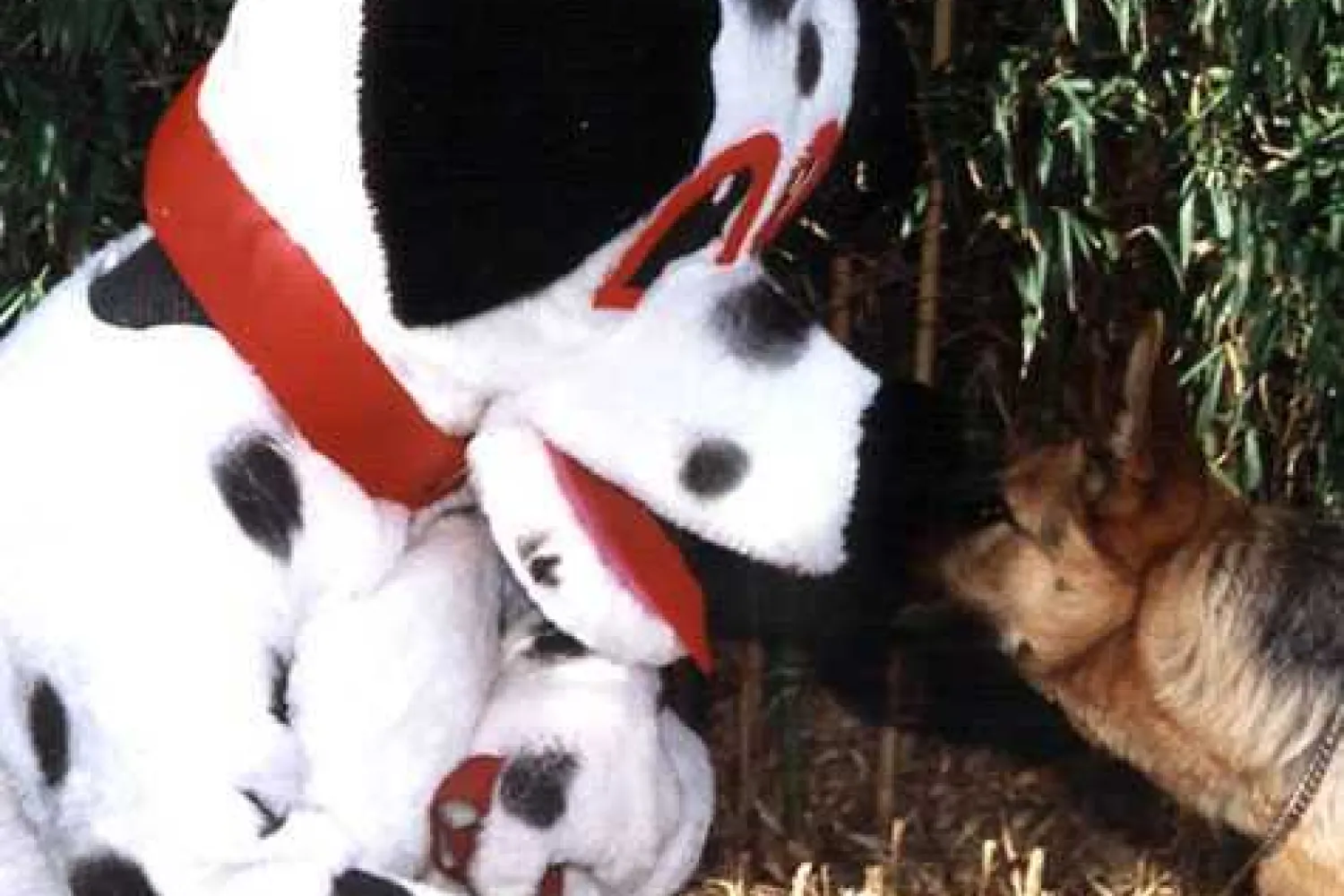
Watch the Dally Says video
